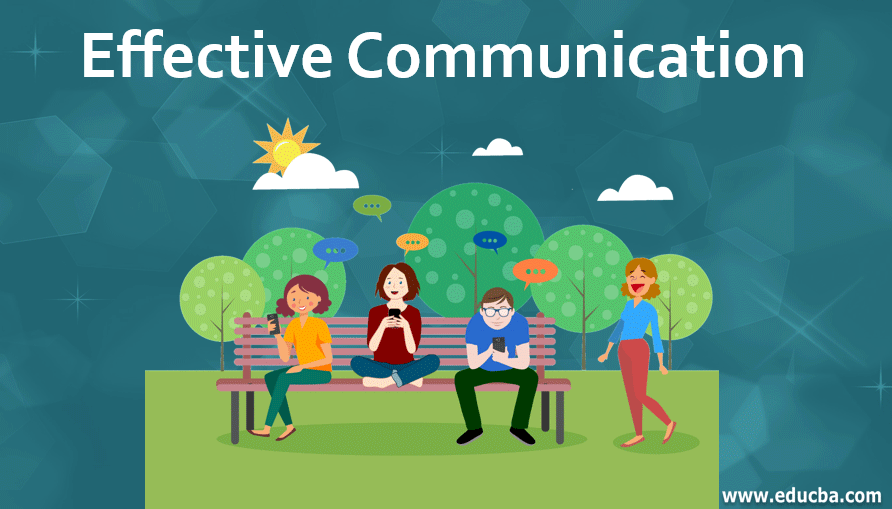Effective Communication Skills: Enhancing Every Conversation

In today’s interconnected world, the art of effective communication has never been more critical. Mastering communication skills is not just a professional necessity. It enhances every aspect of personal interactions, fostering better relationships, clearer understanding, and more successful conflict resolution.
Whether in a high-stakes business meeting or a casual conversation, the ability to convey messages clearly and comprehend others’ perspectives is invaluable. This article delves into the nuances of enhancing effective communication skills, with a focus on not only what we say but how we say it. It emphasizing the importance of effective communication in achieving personal and professional success. It subsequently explores mastering nonverbal communication, as body language and tone often speak louder than words.
Principles of Effective Communication
Table of Contents
Toggle
Effective communication is the foundation of healthy relationships, both personal and professional. It involves more than just exchanging information; it’s about understanding the emotions and intentions behind the words . The following are some essential principles that govern effective communication:
Basics of Effective Communication
1) Active Listening:
Engaged listening is crucial for effective communication. It involves being fully present, limiting distractions, reflecting on what is being said, and showing empathy. This helps build a stronger connection and ensures that the other person feels heard and understood.
2) Clarity:
Messages should be clear and concise, avoiding ambiguity or unnecessary complexity. This ensures that the recipient understands the intended meaning without making assumptions.
3) Nonverbal Communication:
Body language, tone of voice, and other nonverbal cues play a significant role in effective communication. They should reinforce and align with the verbal message, rather than contradict it.
4) Respect and Courtesy:
Effective communication involves being respectful and courteous towards the other person. This includes using appropriate language, considering their background and perspectives, and avoiding offensive or dismissive behavior.
5) Openness and Honesty:
Effective communication requires openness and honesty from both parties. It’s important to express feelings and needs honestly while also being receptive to the other person’s perspective.
Impact of Good Effective Communication Skills

1) Conflict Resolution: Effective communication skills can help prevent conflicts, facilitate understanding, and resolve disagreements in a healthy manner. It involves active listening, validating feelings, staying on topic, and finding compromises.
2) Stronger Relationships: Clear communication fosters better understanding and deeper connections. It helps build trust, empathy, and a sense of being heard and valued in relationships.
3) Improved Teamwork: In a professional setting, effective communication is essential for teamwork and collaboration. It ensures that everyone is on the same page, understands their roles and responsibilities, and can work together towards common goals.
4) Personal Growth: Developing strong effective communication skills can lead to personal growth and self-awareness It encourages individuals to reflect on their own communication styles, identify areas for improvement, and adapt to different situations and people.
5) Increased Productivity: Effective communication in the workplace can boost motivation, job satisfaction, and overall productivity .It reduces misunderstandings, facilitates problem-solving, and creates a positive work environment.
Mastering Nonverbal Effective Communication

Nonverbal communication plays a crucial role in effective interactions. Body language, facial expressions, gestures, and other nonverbal cues convey a wealth of information beyond the spoken word. Mastering the art of reading and interpreting body language can greatly enhance your ability to communicate effectively and build stronger connections with others.
Reading and Interpreting Body Language
Body language refers to the nonverbal signals that we use to communicate, accounting for a significant portion of daily communication, estimated to be between 60% to 65%. These nonverbal signals provide insights into how people may be feeling in a given situation and can help us understand others and ourselves better.
The three major types of body language are:
1) Facial Expressions: The human face is highly expressive, capable of conveying countless emotions without words. Facial expressions for emotions like happiness, sadness, anger, surprise, fear, and disgust are universal across cultures.
2) Gestures: Gestures are woven into our daily interactions, conveying information through movements like waving, pointing, or using hands while speaking animatedly. However, the meaning of some gestures can vary across cultures, so it’s essential to be mindful of how they are used.
3) Eye Contact: Eye contact is an essential type of nonverbal communication, as it can communicate interest, affection, hostility, or attraction and maintain the flow of conversation.
Aligning Nonverbal Cues with Verbal Messages
Aligning your nonverbal cues with your verbal messages is essential for creating a cohesive and authentic communication style. When your nonverbal signals match your words, they increase trust, clarity, and rapport. However, if they contradict each other, it can generate tension, mistrust, and confusion .
To improve your nonverbal communication, it’s crucial to be mindful of your own body language and actively observe the nonverbal signals of those around you. Pay attention to inconsistencies between verbal and nonverbal cues, consider the overall group of nonverbal signals, and trust your instincts if you sense a mismatch.
Advanced Listening Skills for Effective Communication
Advanced listening skills are essential for effective communication and building strong relationships, both personal and professional. They involve actively engaging with the speaker, focusing on understanding their message, and responding in a way that fosters a deeper connection.
Engaged Listening Techniques

Engaged listening goes beyond merely hearing the words being spoken. It involves a conscious effort to understand the speaker’s perspective, emotions, and intentions behind their message. Here are some key techniques to practice engaged listening:
1) Be Present: Eliminate distractions, maintain eye contact, and give the speaker your undivided attention. This conveys respect and shows that you value what they have to say.
2) Observe Nonverbal Cues: Pay attention to the speaker’s body language, facial expressions, and tone of voice. As these can provide valuable context and meaning beyond the spoken words.
3) Ask Open-Ended Questions: Encourage the speaker to elaborate by asking open-ended questions that invite them to share more details and insights.
4) Paraphrase and Reflect: Periodically summarize and reflect back what you’ve understood to ensure you’ve accurately grasped the speaker’s message.
5) Withhold Judgment: Suspend your own opinions and biases, and approach the conversation with an open and accepting mindset.
6) Show Empathy: Demonstrate that you understand and appreciate the speaker’s feelings and perspectives, even if you disagree.
Speaking Effectively Under Pressure

Speaking effectively under pressure is a valuable skill that can help you maintain composure, clarity, and credibility in challenging situations. Whether you’re giving a presentation, participating in a meeting, or having a difficult conversation. The ability to communicate clearly and confidently can make a significant difference. Here are some strategies to help you speak effectively under pressure:
Stalling Tactics and Thought Collection
When put on the spot, it’s natural to feel a bit of pressure. However, you can use stalling tactics to buy yourself time to collect your thoughts. This could involve asking the person to repeat the question, pausing briefly before answering, or saying something like. “That’s a great question, let me think about that for a moment.”
During this brief pause, take a few deep breaths to calm your mind and focus your thoughts. Remind yourself that the pressure you’re feeling is often self-imposed and not necessarily reflective of reality. Recognize that the negative thoughts or self-talk you might experience, such as “I’m useless at presenting, this will be embarrassing,” are emotionally driven and not facts. By distancing yourself from these destructive thoughts, you can respond more effectively.
Delivering Clear and Concise Messages
Once you’ve collected your thoughts, focus on delivering your message clearly and concisely. Avoid rambling or going off on tangents, and stick to the key points you want to make. Express yourself with specificity, sticking to the facts and dealing with the present situation rather than getting sidetracked by past disagreements or hearsay.
Use “I” statements rather than “you” statements to avoid sounding accusatory or defensive. For example, instead of saying “You upset me,” try “I feel upset because.” This approach can help create a more open and understanding environment for communication.
Using Technology for Better Communication

Virtual communication embodies the exchange of information and ideas between individuals who, despite being physically distant, bridge the gap through digital mediums. This interaction transpires through a diverse array of channels, including emails, phone calls, video conferencing, and social media platforms.
Effective Email Communication
Email is a valuable tool, but it creates challenges for writers as miscommunication can easily occur when people have different expectations about the messages they send and receive. It is important to use email effectively by:
1) Writing Informative Subject Lines: Email subject lines should convey the main point of your message or the idea you want the reader to take away, being as specific as possible.
2) Using Proper Greetings and Sign-offs: Use some kind of greeting and sign-off, even if you don’t know the person well. This shows respect and professionalism.
3) Considering the Tone: Reflect on the tone of your message, as sarcasm and jokes can often be misinterpreted when not supported by gestures or voice inflections.
4) Stating the Purpose Clearly: Briefly state your purpose for writing at the beginning of your message.
5) Formatting for Readability: Use paragraphs, bullet points, and formatting tools like bold or capital letters to highlight important information and make your message easy to read.
6) Proofreading: Re-read messages before sending them, checking grammar, spelling, capitalization, and punctuation.
Virtual Communication Tips
When communicating virtually, it’s essential to:
1) Ensure Accessibility: Begin by asking who has access to what technology and when they have access, specifically discussing internet speed, computers, and smartphones.
2) Use Appropriate Tools: Use text-based tools like email or Slack for sharing information and simple data. While virtual conference meetings are better for problem-solving, decision-making, and addressing group behavioral concerns.
3) Maintain Focus: Individually turn off distractions, be attentive and engaged throughout every meeting, and maintain a positive and supportive tone .
4) Promote Collaboration: Encourage members to support one another, share changes in individual circumstances, remind people about success goals, and proactively identify and suggest solutions to project challenges.
5) Manage Emotions: Avoid attributing others’ behavior to negative intentions, give them the benefit of the doubt, and share from the perspective of your own experience and how it impacts the team.
Conclusion
Throughout this article, we’ve explored the multifaceted nature of effective communication, unveiling its importance not just in professional settings. But in enhancing personal relationships and fostering deeper connections. From mastering the subtleties of nonverbal cues to developing the art of listening and speaking under pressure, the journey towards communication mastery is both enriching and essential. By emphasizing these skills, individuals not only open doors to personal and professional growth but also contribute to building more understanding and empathetic societies.
Embracing technology as a bridge for effective communication in our increasingly digital world, we’re reminded of the power and potential of connecting across distances. As we refine our abilities to convey thoughts and emotions effectively, whether face-to-face or through a screen. The shared aim is clear: to nurture meaningful interactions that transcend barriers.
The skills and insights gained here are stepping stones towards a future where every conversation, regardless of the medium. It is an opportunity for mutual growth and connection, embodying the essence of human warmth and understanding in every exchange.
FAQ's of Effective Communication
Q: How can I Improve my Effective Communication Sills?
To enhance your Effective communication skills, consider the following strategies: Always listen attentively to others, tailor your communication to your audience, be aware of your body language, review your messages before sending them. And keep your communication brief but detailed, jot down important points, choose calling over texting when necessary, and think carefully before you speak.
Q: What are the key steps to mastering effective communication?
To master effective communication, you can follow these eight tips: Be clear and concise in your messaging, prepare your communications in advance, be aware of nonverbal cues, monitor the tone of your voice, practice active listening, develop your emotional intelligence, and establish a communication strategy specific to your workplace.
Q: What are the five essential communication skills?
The five fundamental effective communication skills include: Written communication, which involves expressing ideas through writing; oral communication. Which involves speaking to convey information; non-verbal and visual communication, such as body language and facial expressions; active listening, which requires full engagement and understanding of the speaker. And contextual communication, which involves adapting your communication style to fit the situation.
Q: What are four effective ways to enhance communication skills?
To improve your effective communication skills, focus on these four areas: Be mindful of nonverbal signals, record yourself to review your speaking skills, prioritize listening over speaking. And engage in group communication exercises to gain feedback and experience.
